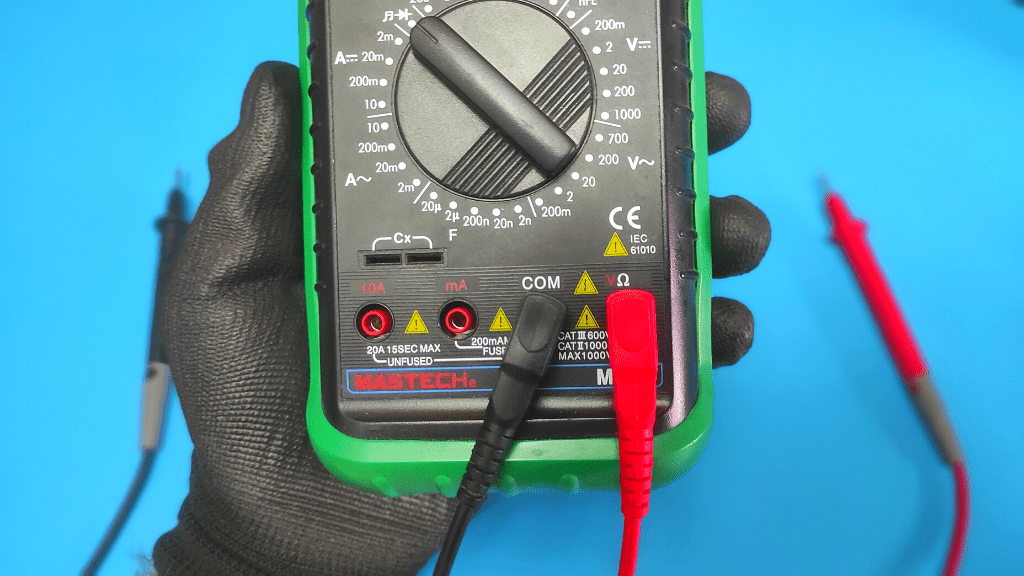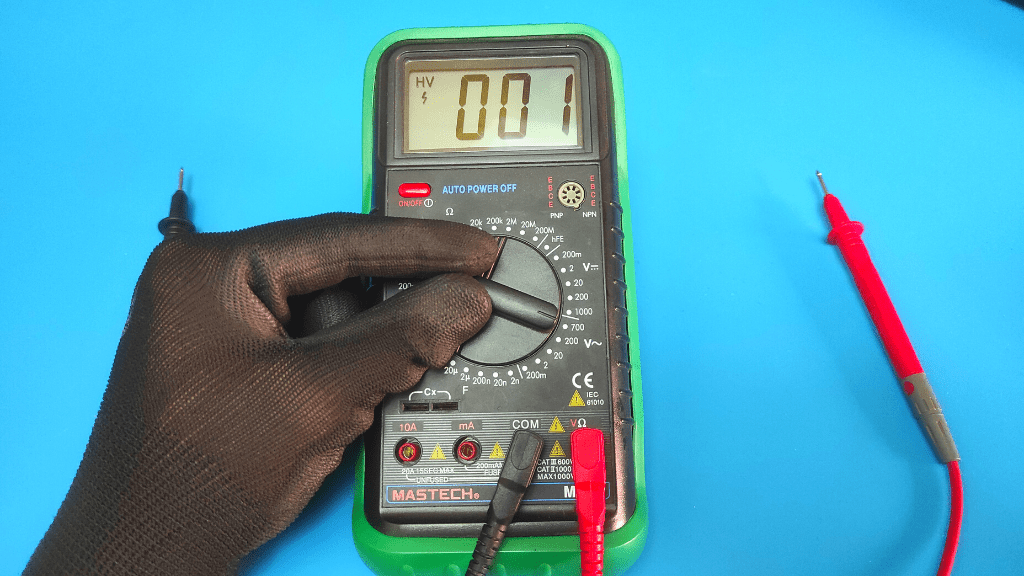
How to test 240 voltage with a multimeter
Content
Are you having trouble with a particular outlet or plug in your home? It can't power your large 240V electrical appliances or cause those electrical appliances to malfunction?
If yes, then you need to check if it works with the right voltage, as well as the condition of its circuit.
Many people do not know how to do this, so we are making this information available to you.
Let's get started.

Tools needed to test 240V voltage
To test voltage 240 you will need
- Multimeter
- Multimeter probes
- Rubber insulated gloves
How to test 240 voltage with a multimeter
Identify the outlet you wish to test, set your multimeter to the 600 AC voltage range, and place your multimeter probes into each of the two identical openings on the outlet. If the outlet provides 240 volts of current, the multimeter is also expected to show a 240V reading.
There is much more to know about testing 240 volts with a multimeter, and we will delve into them.
- Take precautions
The first step you should always take before checking a hot electrical wire or component is to protect yourself from fatal electrical shock.
As a general rule, you wear rubber insulated gloves, put on safety goggles, and make sure the multimeter leads don't touch each other while testing.

Another measure is to keep both multimeter probes in one hand so that electricity doesn't run through your entire body, just in case.
After all security measures are completed, you move on to the next step.
- Identify your 240V plug or socket
For your diagnosis to be accurate, you must ensure that you are testing an actual 240V electrical component.
In most cases, they are usually listed in manuals or nationwide electrical system drawings.
For instance, the United States uses 120V as a standard for most appliances, with only large appliances like air conditioners and washing machines requiring high 240V current.

However, it's not entirely reliable if you know if the outlet is actually 120V or 240V. Fortunately, there are other methods.
One way to physically identify an outlet is to check if the circuit breaker associated with it is a two-pole one, as it is used in 240V systems.
Another way is to check its external signs.
A 240V plug is usually larger than a 120V socket and usually has three sockets; two vertical slots of the same size and a third slot in the shape of the letter "L".
Two identical slots provide 120V each for a total of 240V, and the third slot contains the neutral wiring.
Sometimes the 240V configuration has a fourth semi-circular slot. This is a ground connection for protection against electric shock.
On the other hand, when testing 120V, you usually have three non-identical slots. You have a half circle, a long vertical slot, and a short vertical slot.
Comparing these will help you visually determine whether the outlet works with 240 volts or not. If it does, move to the next step.
- Connect test leads to multimeter
To measure voltage, you connect the multimeter's black negative probe to the port labeled "COM" or "-" and the red positive probe to the port labeled "VΩmA" or "+".

- Set your multimeter to 700 ACV
There are two types of voltage; DC voltage and AC voltage. Your home uses AC voltage, so we set the multimeter to this value.
On multimeters, AC voltage is represented as "VAC" or "V~" and you also see two ranges in this section.
The 700VAC range is the appropriate setting for 240V measurement, as it is the nearest higher range.

If you use the 200V AC setting to measure 240V, the multimeter will give an "OL" error, which means overload. Just put the multimeter in the 600VAC limit.
- Plug the multimeter leads into a 240V socket
Now you simply insert the red and black wires into each of the same socket slots.
Make sure they are in contact with the metal components inside the slots to ensure correct diagnosis.

- Rate results
At this point in our test, the multimeter is expected to give you a voltage reading.
With a fully functional 240V outlet, the multimeter reads from 220V to 240V.
If your value is below this range, then the voltage in the outlet is not enough to power 240 V appliances.
This may explain some of the electrical problems you have with appliances not working.
Alternatively, if the outlet shows a voltage higher than 240V, the voltage is greater than required and may damage your appliances.
If you have any electrical devices that have exploded when plugged in, you have the answer.
Alternatively, you can watch our video tutorial on the topic here:
Alternative estimates
There are other ways you can plug your multimeter leads into an outlet to make a more accurate diagnosis.
This is where you determine which of the hot slots is having a problem, as well as whether there is a short in the circuit.
Testing every hot side
Remember that two identical live slots are powered by 120 volts each. Set the multimeter to the 200 VAC limit for this diagnostic.
Now you place the multimeter's red lead into one of the live slots and the black lead into the neutral slot.
If you have four slots, you can put the black wire in the ground slot instead.
If the slot provides the right amount of voltage, you would expect to get 110 to 120 volts on the multimeter screen.
Any value outside this range means that a particular live slot is bad.
Short circuit test
The socket or plug may not work properly due to a short circuit in the circuit. This is where electricity passes through the wrong components.
With the multimeter set to the 600VAC limit, place the red test lead in the neutral slot and place the black test lead on any metal surface nearby.
If you are using a four-prong socket or plug, plug one probe into neutral and the other probe into the ground socket.
You can also individually test the ground slot on a metal surface.
If you get any multimeter readings, then a short circuit has occurred.
No current should flow through the neutral slot unless the device draws power through it.
Tips for replacing 240V electrical components
In case your outlet or plug is defective and you decide to replace it, there are a few things to consider.
When selecting components for a new installation, make sure they have the same ratings for 240V electrical systems. These specifications include
- Same amperage rating for compatibility with your circuit breaker,
- Suitable wire size and
- Consideration of a four-way grounded component to provide increased protection against electrical shock.
Conclusion
Checking a 240 V outlet is a simple procedure that you can easily do yourself. However, the most important thing is to take precautions and follow all the steps above carefully.
You do not need to call an electrician to carry out the appropriate diagnosis. All you need is a multimeter.
F.A.Q.
What does a 240 socket look like?
A 240V outlet usually has two identical live slots and a third "L" shaped neutral slot. Four-sided 240V outlets have an additional fourth earthing socket in the shape of a semicircle.
Are 220 and 240 the same voltage?
In electrical systems, there is no distinction between 220V appliances and 240V appliances or electrical components. Even though these numbers are different, they represent the same voltage level.

